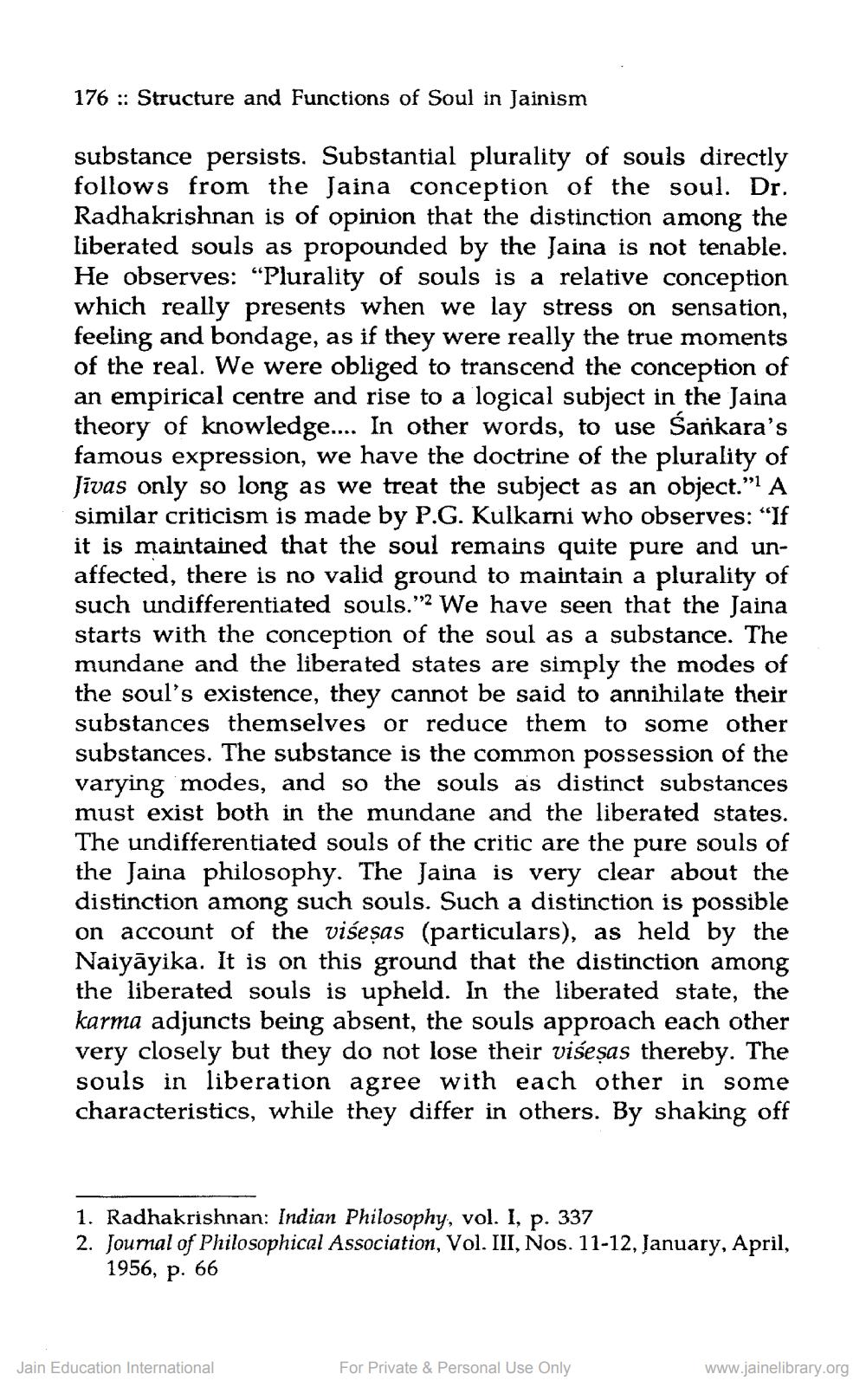________________
176 :: Structure and Functions of Soul in Jainism
substance persists. Substantial plurality of souls directly follows from the Jaina conception of the soul. Dr. Radhakrishnan is of opinion that the distinction among the liberated souls as propounded by the Jaina is not tenable. He observes: “Plurality of souls is a relative conception which really presents when we lay stress on sensation, feeling and bondage, as if they were really the true moments of the real. We were obliged to transcend the conception of an empirical centre and rise to a logical subject in the Jaina theory of knowledge.... In other words, to use Sarkara's famous expression, we have the doctrine of the plurality of Jivas only so long as we treat the subject as an object." A similar criticism is made by P.G. Kulkarni who observes: “If it is maintained that the soul remains quite pure and unaffected, there is no valid ground to maintain a plurality of such undifferentiated souls." We have seen that the Jaina starts with the conception of the soul as a substance. The mundane and the liberated states are simply the modes of the soul's existence, they cannot be said to annihilate their substances themselves or reduce them to some other substances. The substance is the common possession of the varying modes, and so the souls as distinct substances must exist both in the mundane and the liberated states. The undifferentiated souls of the critic are the pure souls of the Jaina philosophy. The Jaina is very clear about the distinction among such souls. Such a distinction is possible on account of the višeşas (particulars), as held by the Naiyāyika. It is on this ground that the distinction among the liberated souls is upheld. In the liberated state, the karma adjuncts being absent, the souls approach each other very closely but they do not lose their viseșas thereby. The souls in liberation agree with each other in some characteristics, while they differ in others. By shaking off
1. Radhakrishnan: Indian Philosophy, vol. I, p. 337 2. Journal of Philosophical Association, Vol. III, Nos. 11-12, January, April,
1956, p. 66
Jain Education International
For Private & Personal Use Only
www.jainelibrary.org




